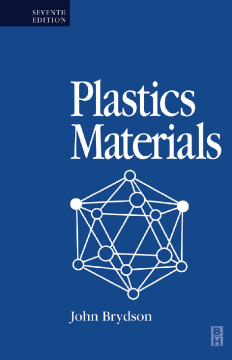
Additional Information
Book Details
Abstract
The seventh edition of this classic reference work once more provides a comprehensive overview of commercially available plastics materials. Bridging the gap between theory and practice, it enables scientists to understand the commercial implications of their work as well as providing technologists with a theoretical background.
Since the previous edition, several new materials have been announced. Many of these materials result from metallocene catalyst technology. In addition, developments also continue with condensation polymers with several new polyester type materials of interest for bottle-blowing and/or degradable plastics. New phenolic-type resins have also been announced. As with previous editions, an explanation of the properties of these new materials in terms of their structure and morphology involving the principles laid down in the earlier chapters is presented.
'Aiming to bridge the gap between theory and practice, the book enables scientists to understand the commercial implications of their work as well as providing technologists woth a theoretical background.' Sampe Journal
Reviews of previous editions have included:
'One is dumbstruck with admiration and almost total disbelief on being presented with the new edition of Plastics Materials, or simply 'Brydson' as it is more popularly known. How can just one man know so much about he subject. Just about everything that could possibly be said about plastics or rubber material is there, which is why it has enjoyed a reputation and status as the Bible of the industry for many years.' British Plastics & Rubber
'Since publication of the first edition in 1965, John Brydson's Plastics Materials has become widely acknowledged within the industry as a classic source of reference. This sixth edition upholds the reputation, providing a comprehensive overview of the properties, processing and applications of commercially-available plastics materials, as well as expanding the coverage with the inclusion of new information. As indispensable as its predecessors, this updated reference textbook should be of interest and value to polymer student and practising technologist alike. Certainly no collection of plastics literature will be complete without a copy.' RAPRA Abstracts
